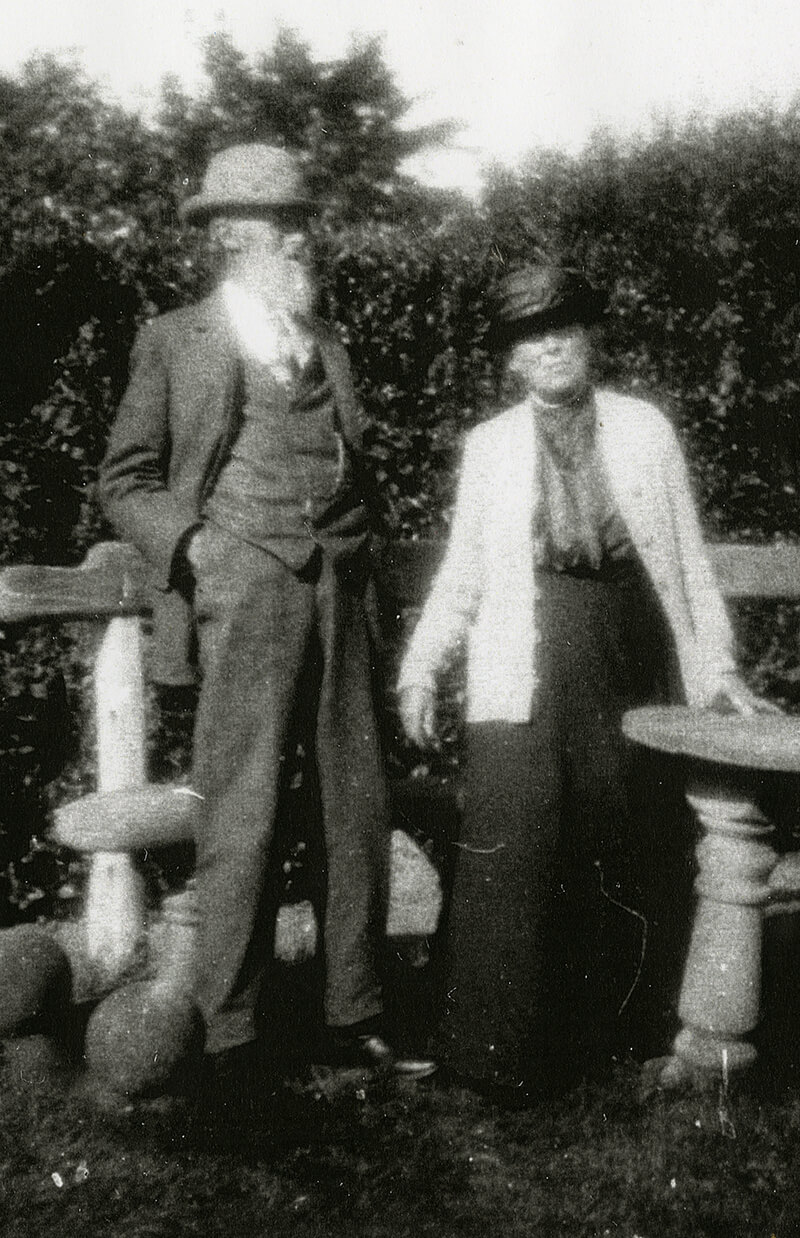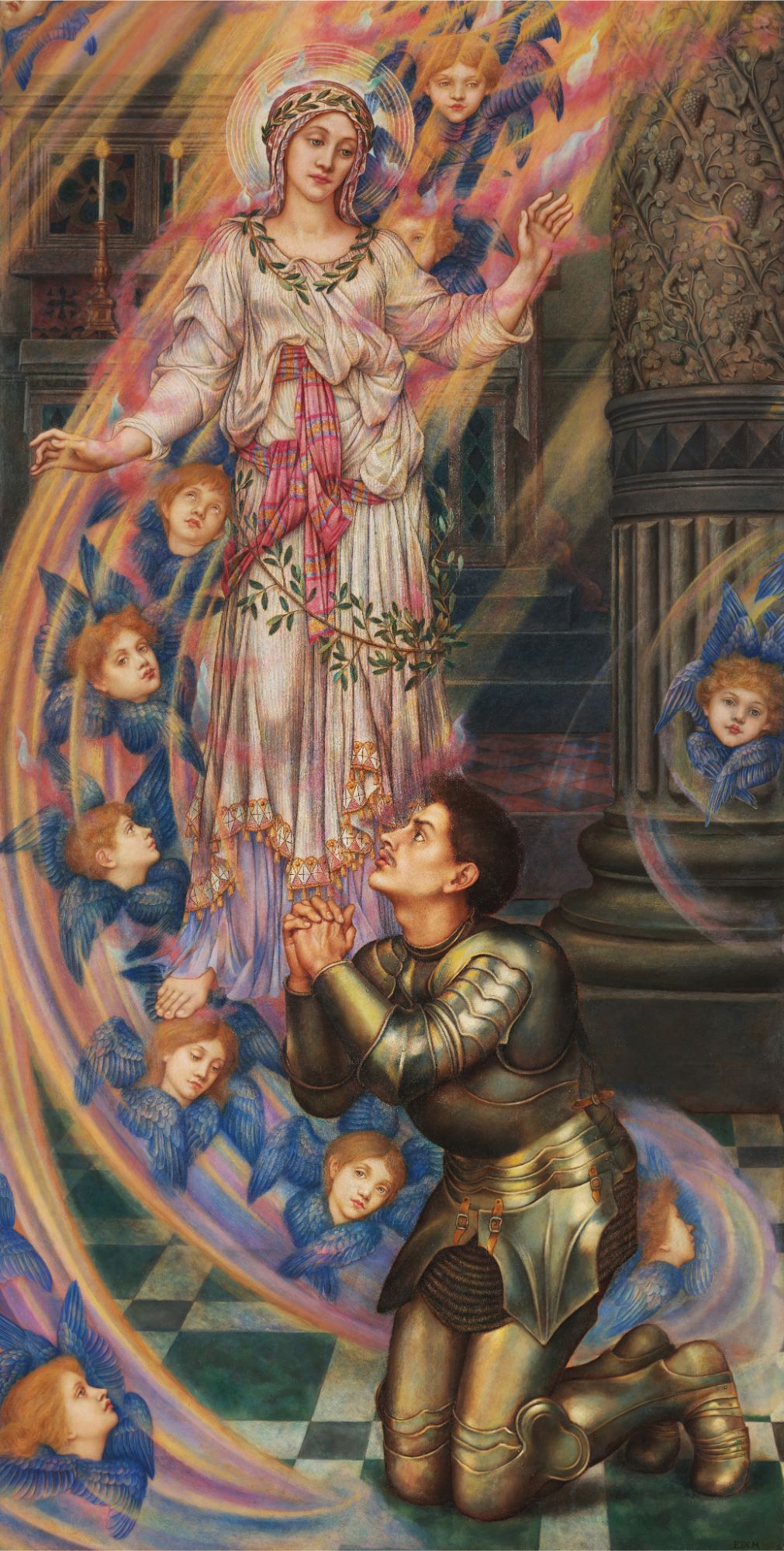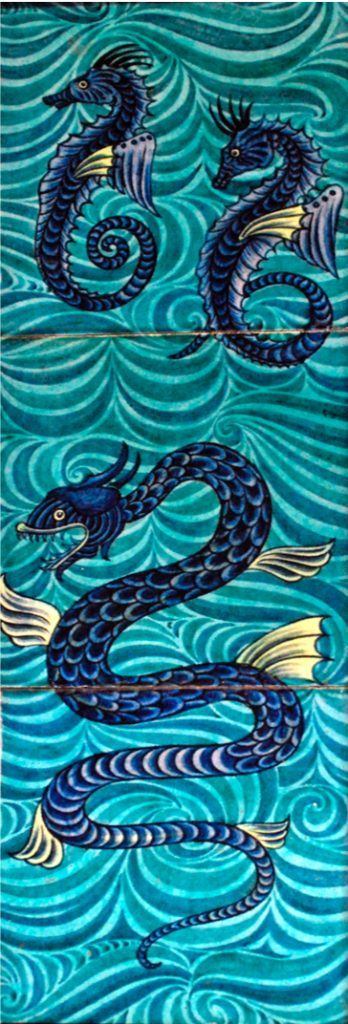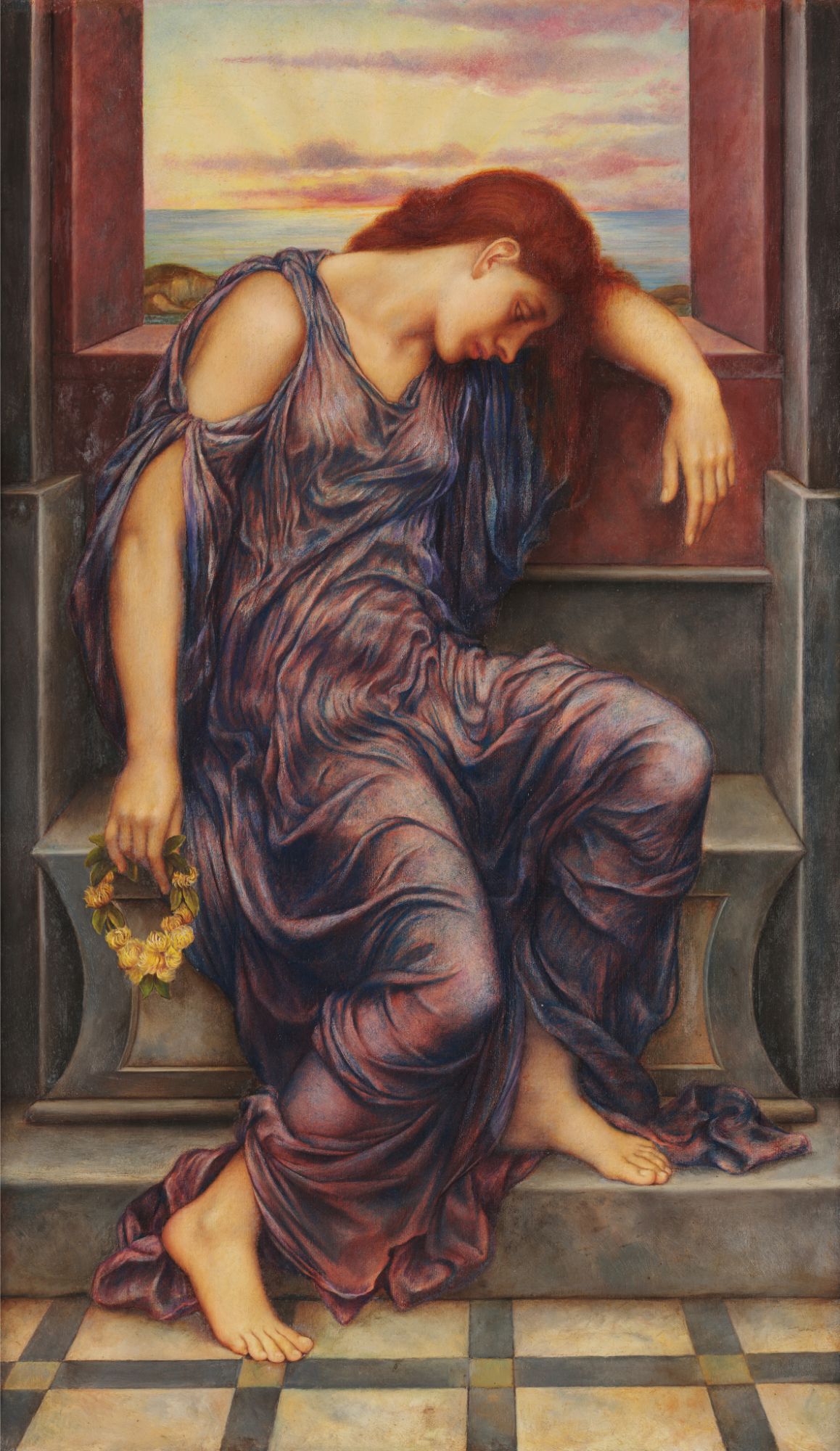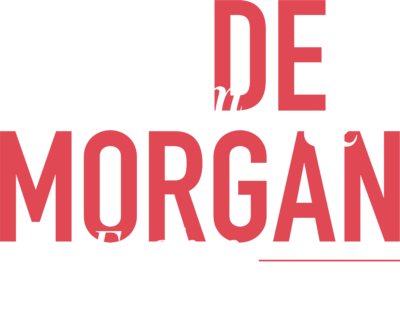
This exhibition has now closed to the public. However, you can still enjoy an online visit through our video tours and text and images below.
Watch De Morgan Curator, Sarah Hardy, give a talk and virtual tour of the exhibition.
About the Exhibition
Long before Frida Kahlo and Diego Rivera, Gilbert and George or Jackson Pollock and Lee Krasner, the Victorian era’s art power couple was William (1839-1917) and Evelyn De Morgan (1855-1919).
As designer and painter, rather than just husband and wife, the De Morgans were as Sir Edward Poynter, President of the Royal Academy, notably described them ‘two of the rarest spirits of the age.’ The two artists bridged Arts and Crafts and post-Pre-Raphaelitism through their friendships and collaborations, making them central to the story of art of the late 19th to early 20th-century. Taking its inspiration from Poynter’s insightful remark, the Laing Art Gallery’s new exhibition explores the juxtaposition of William’s aesthetically driven designs with Evelyn’s narrative paintings, focussing on her spiritual and pacifist themes.
The De Morgans: ‘Two of the rarest spirits of the age’ will bring over 120 of works by William and Evelyn to Newcastle, including more than thirty of Evelyn’s drawings from the De Morgan Collection Archive. Many of the compositional elaborate studies are almost as large as the paintings, but have seldom been seen in public. They are complemented by other drawings, such as charming children’s portraits, and studies for figures and a knight’s armour.
It will also be one of the largest ever exhibitions of the De Morgans’ work, with Our Lady of Peace (1907) by Evelyn De Morgan shown for the first time since undergoing major conservation work in 2018.
Before their marriage in 1887, both William and Evelyn were already established artists in their own rights. They were devoted to each other and shared a great interest in social reform, pacifism and spiritualism. The De Morgans were also supporters of the Suffragette movement, with Evelyn signing the Declaration in Favour of Women’s Suffrage in 1889. William showed his support by serving as Vice President of the Men’s League for Women’s Suffrage in 1913.
William De Morgan was undoubtedly the most intriguing and inventive ceramic designer of the late Victorian period. He was life-long friends with William Morris and Edward Burne-Jones and created stunning Arts and Crafts tiles and ceramics to complement their fashionable designs for interiors.
William was the son of a mathematician and had a classical art training at the Royal Academy School. As a result, he always underpinned his elaborate designs with geometric structures, borrowed from medieval design and Islamic art. The complex geometric underpinning of his work are explored in the exhibition.
Mythological beasts also featured as part of William’s output, including his wonderful Seahorse Tile Panel (1872-1907). Decorated with stylised seahorses, waves and a somewhat jolly-looking sea monster, this earthenware tile panel – consisting of three 9″ tiles – reveals his ability to be playful and imbue his often anthropomorphic creatures with charming personality.
Although William De Morgan is best known as a ceramic designer, this exhibition reveals his skills both as a scientist and mathematician, who made his own kilns and glazes in order to achieve perfection. His skill is demonstrated in magnificent lustre-ware bowls and vases, including his Ruby Lustre Dish with Dragon and Owls, and his intriguing Fish and net vase, as well as elaborate tile panels, such as his Fan Tile Panel. For the first time ever, one of William De Morgan’s drawings for tiles will be on display. Featuring three, long-legged birds in a pattern which repeats over two tiles, this exceptional drawing shows his innate comprehension of the central role of mathematics in his design work.
In 1887, William married professional artist Evelyn Pickering. Her remarkable paintings bear the influence of early Italian Renaissance art, as well as the legacy of Pre-Raphaelitism, yet have a distinctive style all of their own. Her unique paintings also projected her political concerns – she was deeply affected by the outbreak of the First World War – and created many pictures in response to the conflict. The exhibition showcases her peace paintings and the preparatory drawings she made for them, giving an overview of her working process and ideals.
“Evelyn De Morgan wanted her pictures from the time of the 1914-18 conflict to act as symbols of hope for a peaceful outcome to the war and sold the works, with the proceeds going to the Red Cross. The original exhibition catalogue and Evelyn’s own ration book will be on display, in order that we might understand her very personal response to WWI.”,” says Sarah Richardson, Keeper of Art at the Laing Art Gallery. “It will also showcase some of William’s finest animal designs, from dragons, to macaws, to that sneaky sea monster, swimming up to catch its seahorse companions!”
“The De Morgan Collection has never been exhibited in the North East before and we are delighted to hold the first retrospective of the paintings and ceramics of this remarkable Victorian artistic couple at the Laing Art Gallery. Its Victorian architecture and fabulous collection make it the perfect setting to host this exhibition. It will be the biggest showing of the De Morgans’ artwork anywhere in the world, combining the ceramics, paintings, drawings and archival material to really show off the remarkable qualities of these artists, occupying a unique artistic place on the cusp of Pre-Raphaelitism and Arts and Crafts in Britain” says Sarah Hardy, Curator and Manager of the De Morgan Collection.
The De Morgans explores the exceptional work created by this pair of very different – and equally intriguing – British artists working from the late 19th to early 20th centuries. This rare opportunity to see the work of the two artists together allows us to appreciate the “rare spirits” that Sir Edward Poynter so admired.
Donate
We rely on your generous support to care for and display this wonderful collection


